Webpages tagged with «Population dynamics»
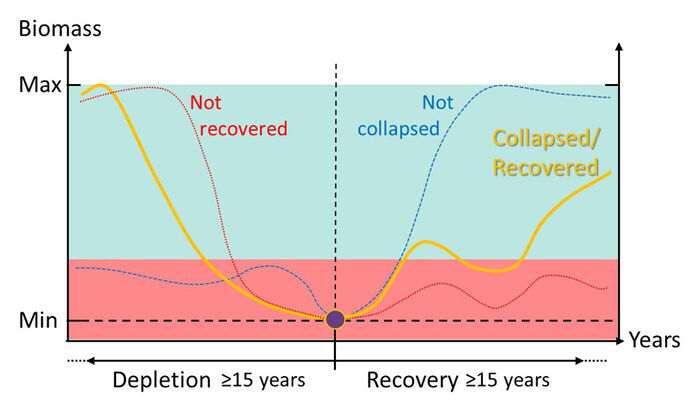
The worldwide human footprint is increasingly evident. Over the decades, many species have collapsed or are collapsing with only some recovering. A key question is what happens to these populations after the collapse. In a study published in Scientific Reports (Durant et al 2024), we test whether the effect on fish populations from overfishing, climate, and survival of young fish remains the same after a collapse.
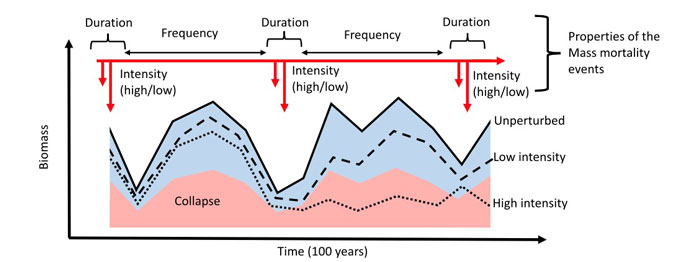
Extreme climate events, overexploitation and in general human activities can lead to a strong elevation of mortality, particularly for young and sensitive life stages. Such mass mortality events are predicted to occur more frequently. In our study published in Global Change Biology (Langangen & Durant, 2024), we recorded the chance of collapse of fish populations confronted to various levels and frequency of mass mortality events.
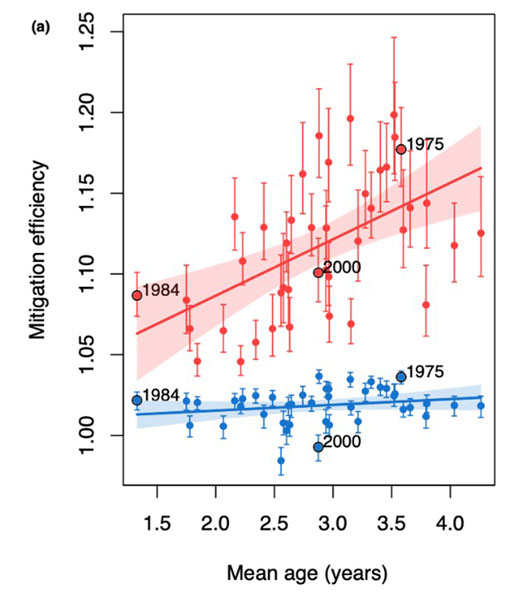
Climate change and increasing human activity are increasing risks of mass mortality events. In their recent study published in the Journal of Applied Ecology, Buttay et al. (2023) have focused on perturbations that could impact the early life stage of fish. Using the Northeast Arctic cod in the Barents Sea as an example, they evaluated different mitigation strategies alleviating the effect of such dramatic events on the population.
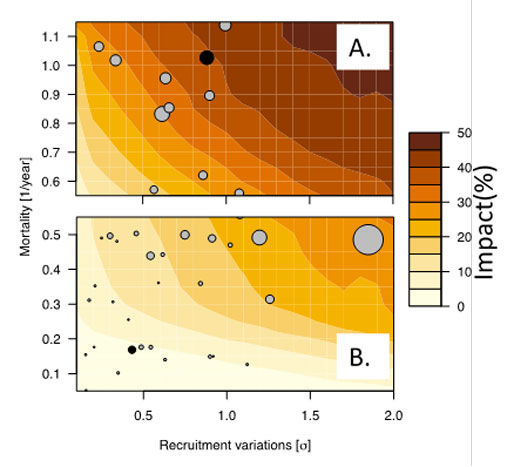
Mass mortality events are on the rise globally. However, we have a limited understanding of the population consequences of such events that particularly affect the early life of fish. To increase our understanding of the population-level effects of mass mortality in early life, we constructed population models for 40 fish species and ran scenarios on mass mortality for these species. Our approach allows for predictions of potential effects of mass mortality in a range of fish.

Jellyfish are usually not targeted by scientific surveys that focus on commercial fish stocks. However, they are very often found in the by-catch of egg and larval surveys. In a recent paper in ICES journal of Marine Sciences, we studied such by-catch data from surveys conducted between 1959-1993 in the Barents Sea showing the high value of such historic data.
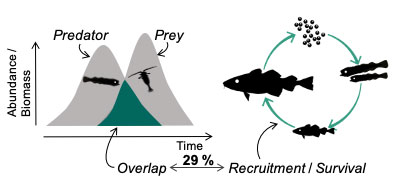
We assessed the effect of the predator−prey relationship on predator survival by developing a novel metric of predator−prey overlap using spatio-temporal statistical models. We found that the amount of overlap between cod larvae (length: 11−15 mm) and their prey explained 29 % of cod recruitment variability.
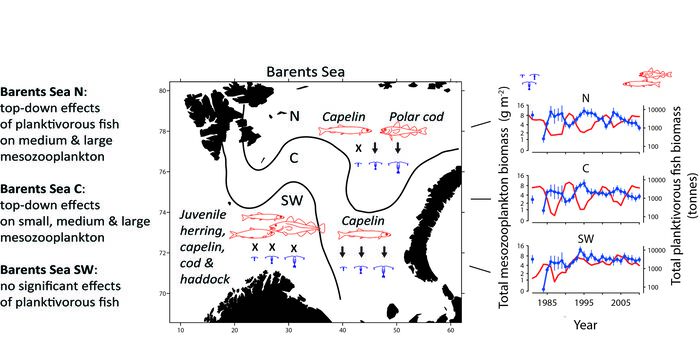
Statistical analyses of long-term monitoring data reveal an inverse relationship between the biomasses of zooplankton and plankton-eating fish, but only in the northern and central parts of the Barents Sea. In the southwestern Barents Sea, so such relationship is found.